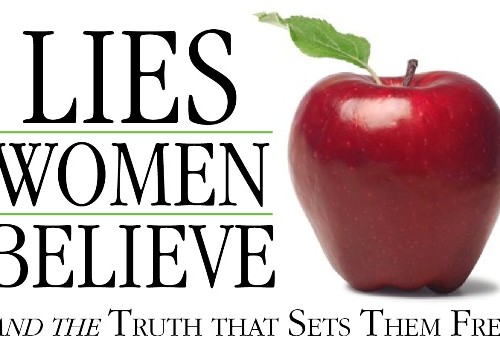The patriarchy is strong with this one.
I think I might have broken a record for how many times I threw the book across the room during a single chapter, but I suppose that should have been expected considering this is the last chapter and John and Stasi have to really start nailing everything home– we only have the epilogue left.
They start off this chapter by making me laugh, because they frame the story of Cinderella as “a beautiful parable.” I’m sorry, y’all, but Cinderella is a character from a fairy tale. I’m not going to argue that fairy tales can’t communicate deep and abiding truths, questions, morals, and ideas (since the title of this blog is a reference to the argument that they can and do), but fairy tales and parables aren’t the same thing. At this point, though, I’m not surprised that they’ve conflated the two– they’re twisted and manipulated various forms of art all through their book.
At the end of the chapter, they pull from Anna and the King, the non-musical (and slightly less racist) version of The King and I, and uncritically present the end of the film thusly:
[King Mangkut] wants to show the British that his country is ready to enter into the affairs of the world, so the dinner is given in the English style– silverware, tablecloths, candlelight, and, at the end of the meal, ballroom dancing.
This comes after two hundred pages of John and Stasi insisting, repeatedly, that all women and all men in all countries in all times have believed and acted out the same exact things that the they, living in 21st century America, believe about gender. They have completely erased any other possibility that not every culture in every time has agreed with them about their sexist stereotypes, and then they take something that was supposed to indicate the imperialistic and colonialist oppression of the East by Britain and portray it as if it is a positive thing. They are utterly tone deaf, and seem completely incapable of getting outside of their white middle-class American privilege bubble.
Also, just two random observations: even though they refer to Junia as a woman, they use the almost-successful-attempt-to-erase-her-womanhood version of her name, using “Junias” on page 206. On page 214, they relegate Deborah, who is described as a “prophet” and who was “leading Israel” or “judging Israel” (depending on translation) in Judges 4:4, to a mere “advisor.” They take a woman who stands with Ehud, Gideon, and Samson and make her an advisor. ARG GABLARG.
Anyway, the argument of this chapter is that women are desperately necessary, and that we are meant to be “ezer.” Which, this is a beautiful thought, and on a superficial level I’d agree with them. They assert that “women in God’s story are as diverse and unique as wildflowers in a field. No two quite look the same,” and I think they’ve chosen an appropriate image for what they’ve spent three pages describing:
While it’s certainly true that no two wildflowers are going to be exactly the same, when staring at a field full of them, what gets communicated is an overwhelming sense homogeneity. We might have subtle differences, but if women are collectively supposed to be as “diverse as a field of wildflowers,” then we’re not actually diverse at all, and that’s what comes bursting through in their description. They share a half-dozen different stories of women they admire, and they’re all either mothers or completely devoted to “spiritual” tasks (missionaries, etc)– and each one is painted as being sacrificial in the extreme. That is a problem, because women– especially Christian women– are required by patriarchy to be sacrificial to the point of degradation.
And then they talk about “spheres of influence,” blithely skipping over how horrifically damaging the Victorian doctrine of “separate spheres” was for women. If you’re not familiar with the term spheres of influence, it’s fundie-speak, adopted from Cold War-era political and militaristic rhetoric, although it’s simply another phrase for the “separate spheres” nonsense: men are to be in public, women are to be in private (example: men should vote, women cannot). It’s oppressive and sexist language, but they don’t even stop there:
We haven’t time here to address the issues surrounding the ‘proper role of women’ in the church … However, we do believe it is far more helpful to start with Design— with what God designed a woman to be and to offer … A woman is not the same as a man (thank God!)
…
Furthermore, many of the Scriptures on the Role of women in the church are a reflection of God’s concern for a woman’s protection and spiritual covering. We live in a dangerous world … It follows that God would want to ensure that woman helping to advance his Kingdom would be offered the covering and protection of good men. Issues of headship and authority are intended for the benefit of women, not their suppression.
…
God desires that wherever and however you offer yourself to the Body of Christ, you’ll have the protection of good men over you. Not to hold you back, but to set you free as a woman.
This is called benevolent sexism.
John and Stasi have done everything they can to convince their female readers that being relegated to passivity, beauty, placidity, restfulness, inaction, and weakness is actually a good thing, but what they’re really doing is nothing more than a bait-and-switch. You’re a powerful person! You’re the ezer kenegdo! You’re needed! But only if you stay within your proper sphere and let the big strong man protect you. Do anything else, and in their words you are Fallen, Strident, Dominating, or Desolate. If we think we just might be able to be something besides a beautiful muse, we better check ourselves, because that’s Satan trying to destroy what you can do for the church.



